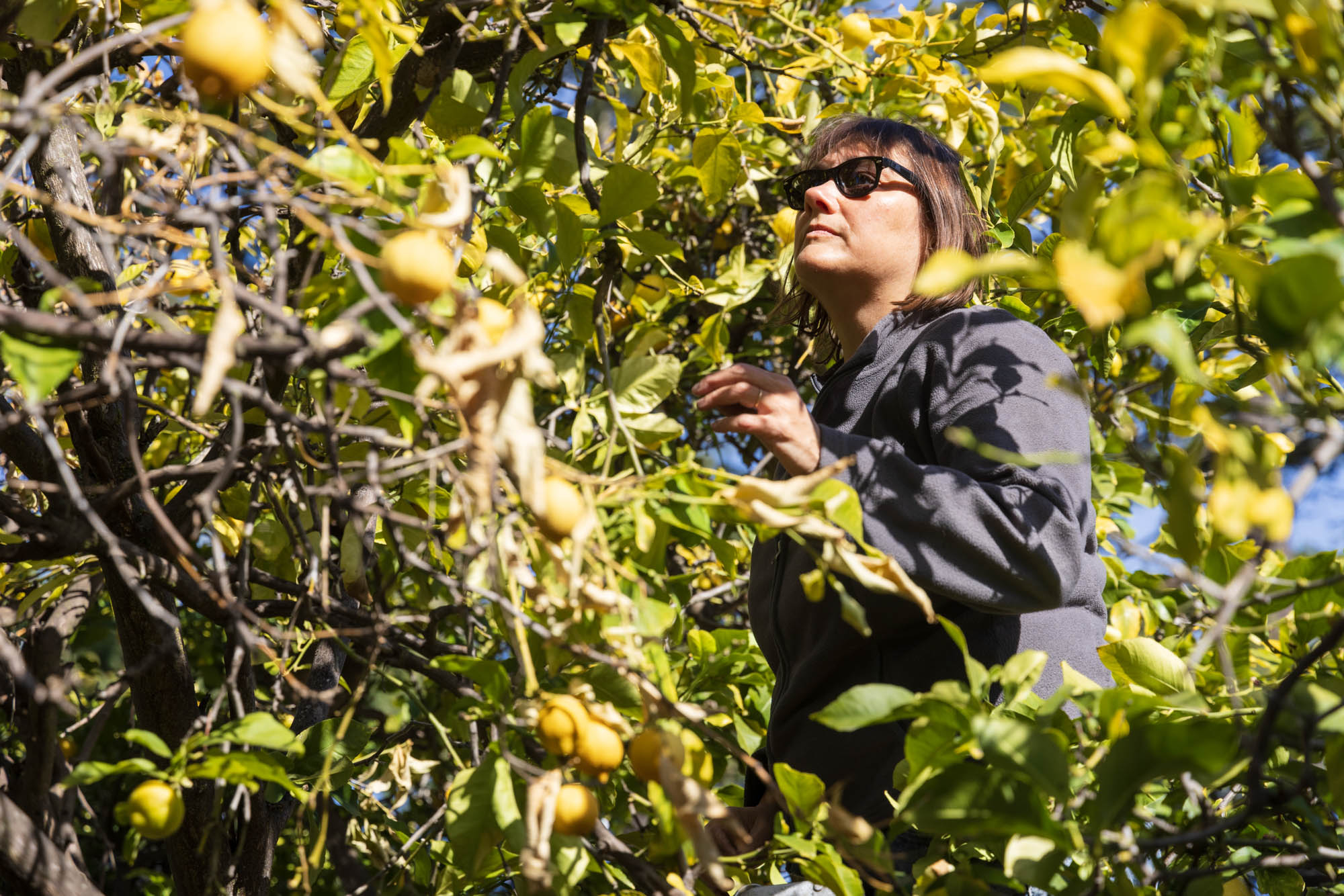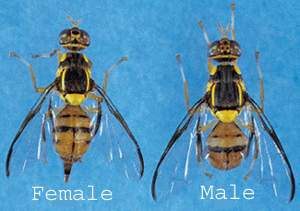For more than two decades, teams of volunteers from Village Harvest have picked excess fruit from backyard trees up and down the Peninsula and donated it to local food banks that distribute the produce to those in need. It's been a win-win for residents unable to harvest or eat their abundance of backyard fruit and for nonprofits seeking food donations.
Now, harvesting and donating produce in many parts of Santa Clara County has been banned, leaving thousands of residents unable to share their fruits and vegetables.
On Sept. 1, the California Department of Food and Agriculture imposed a quarantine restricting those living in a 112-square-mile zone in Santa Clara County from removing homegrown fresh fruit and most vegetables off their property after discovering oriental fruit flies in the area, Santa Clara County officials said in a press release.
The quarantine covers all of Sunnyvale, Santa Clara and Cupertino, and portions of San Jose, Campbell, Los Gatos, Los Altos, Mountain View and Milpitas. In Mountain View, North Whisman, Whisman Station, Old Mountain View, Waverley Park and Cuernavaca neighborhoods are in the quarantine area. In Los Altos, the quarantine area includes South Los Altos and Woodland Acres-The Highlands. (To determine if your property is in the quarantine zone, type your address in the California Department of Food and Agriculture's interactive map. A "no results found," indicates that your property is not within the quarantine area.)
The ban will likely last until June 1, 2024. The Department of Food and Agriculture will treat the area near where the pests were trapped, and is likely to continue doing so through early March 2024, county officials said.
"The new fruit fly quarantine will have a major impact on Village Harvest's programs,' said Craig Diserens, co-founder and executive director of the nonprofit Village Harvest, who launched the program in Palo Alto 2001 to connect tree owners with food banks, as well as assist older adults who are physically unable to harvest their fruit.
The organization typically conducts about 200 harvests a year. In 2022, the group donated more than a quarter million pounds of fruit to local food banks, including Second Harvest of Silicon Valley, which distributes food to more than 900 sites, including Community Services Agency of Mountain View and Los Altos and Lytton Gardens senior apartments and Avenidas senior center in Palo Alto.
"Unfortunately Village Harvest is not permitted to do any harvesting of any type of fruit within the quarantine zone," he said. "There will be no picking of apples, persimmons, citrus or anything else."
There are a few non-commercial orchards remaining within the quarantine that could be impacted next spring and into the summer if the quarantine is extended, he added.
Village Harvest volunteer teams will continue operating outside the quarantine zone, but the amount of fruit from the nonprofit's harvests and donations to food banks may be "substantially reduced," he said.
"In the last few years, about half to two-thirds of our total harvest volume has come from within the area now under quarantine."
Diserens said residents living outside the quarantine zone can continue to share or donate their fruit and veggies, including making donations to food assistance organizations whose facilities are within the quarantine zone and are still currently accepting produce. Some organizations, however, may change their donation acceptance practices, but it's too early to tell, he said.
Officials of the region’s largest food bank, Second Harvest of Silicon Valley, confirmed that the nonprofit has already changed its collection policies: It will not accept any donations of backyard produce at its warehouses in Santa Clara and San Mateo counties during the quarantine.
Diane Baker Hayward, Second Harvest of Silicon Valley spokeswoman, said the nonprofit does not anticipate a significant impact on its produce supply from the quarantine.
Second Harvest gets 92% of its produce supply from farmers outside of Santa Clara and San Mateo counties, she said.
The vast majority of produce collected and distributed by the organization comes from California’s Central Valley or in the neighboring states of Arizona, Oregon and Washington, she said..
“We get produce from farmers up and down the west coast through our collaboration with the California Association of Food Banks,” Baker Hayward said. “It comes to us at little or no cost.”
Fruits and vegetables comprise the largest category of food distributed to an average of 500,000 people per month throughout Santa Clara and San Mateo counties by Second Harvest. The San Jose-based nonprofit operates 130 drive-thru locations in the two counties where they distribute free groceries. It also delivers food to 5,300 households monthly, according to its website.
What to do if you live in the quarantine zone
For those in the quarantine area, county officials advise residents not to move homegrown fresh fruits or vegetables off their property, but to consume or process them at their home.
For produce that isn't consumed, the state requires that it be ground in the garbage disposal or by double-bagging it in plastic bags and putting the bags in the regular garbage bin, rather than in yard-waste bins, for collection. The produce also should not be disposed of in yard waste or compost piles as this will spread or multiply the pest from infected fruit, officials warned.
It's OK to give processed fruit and vegetables to friends as long as the produce is juiced, frozen or cooked, county officials said.
The oriental fruit fly, which looks like a large house fly with a bright yellow body, is known to target more than 230 different fruits, vegetables and plants, including grapes, pome, stone fruits, citrus, dates, avocados, and many vegetables, particularly tomatoes and peppers.
Damage occurs when the female fruit fly lays eggs inside the fruit, California Secretary of Agriculture Karen Ross said. The eggs hatch into maggots, which tunnel through the flesh of the fruit or vegetable, making it unfit for consumption.
The flies pose a significant threat to California's agricultural industry, according to the Department of Agriculture, which noted that the state's crops threatened by the species in 2020 were worth $19.3 billion.
More information about the oriental fruit fly, quarantine updates and how to report a pest can be found on the California Department of Food and Agriculture's oriental fruit fly page.
If you come across purchased produce that has maggots inside, contact the State Pest Hotline at 800-491-1899 or the County of Santa Clara Division of Agriculture at scc.agriculture@cep.sccgov.org or 408-918-4600.
David Goll contributed to this article.




Comments